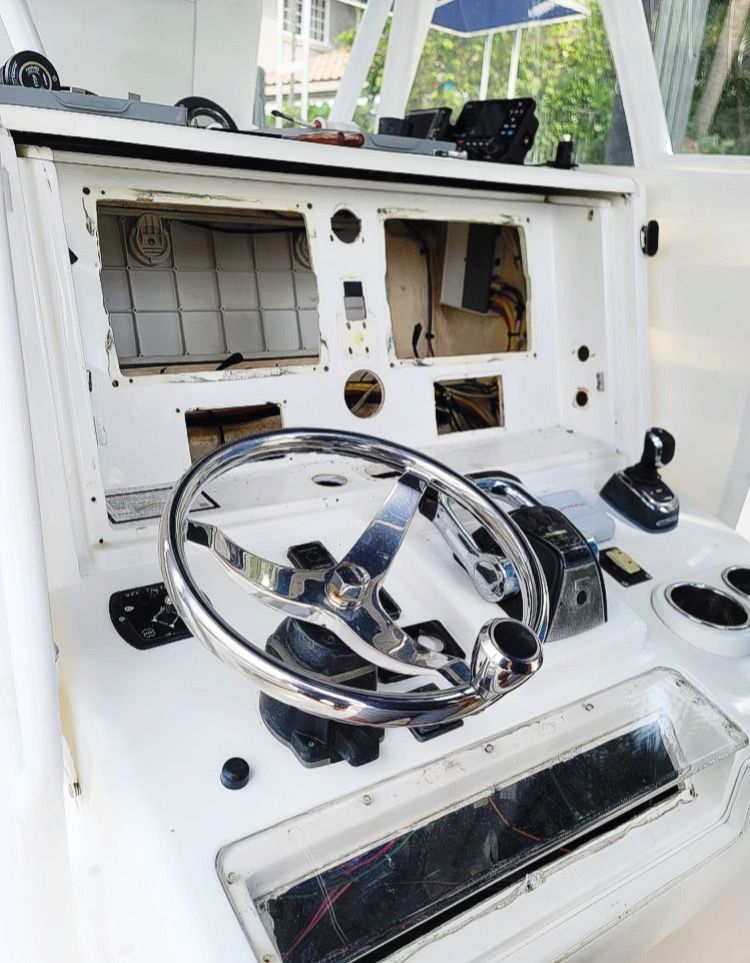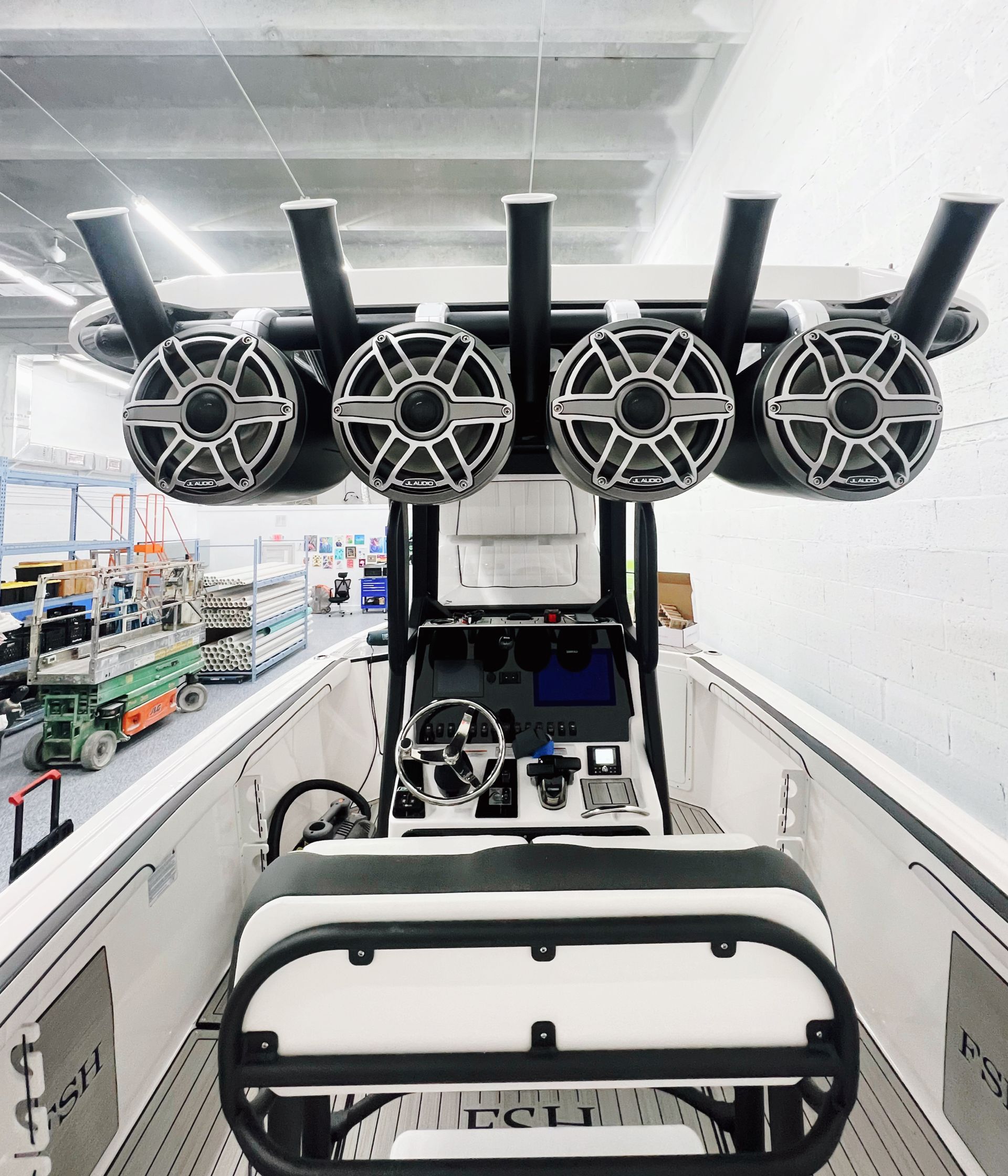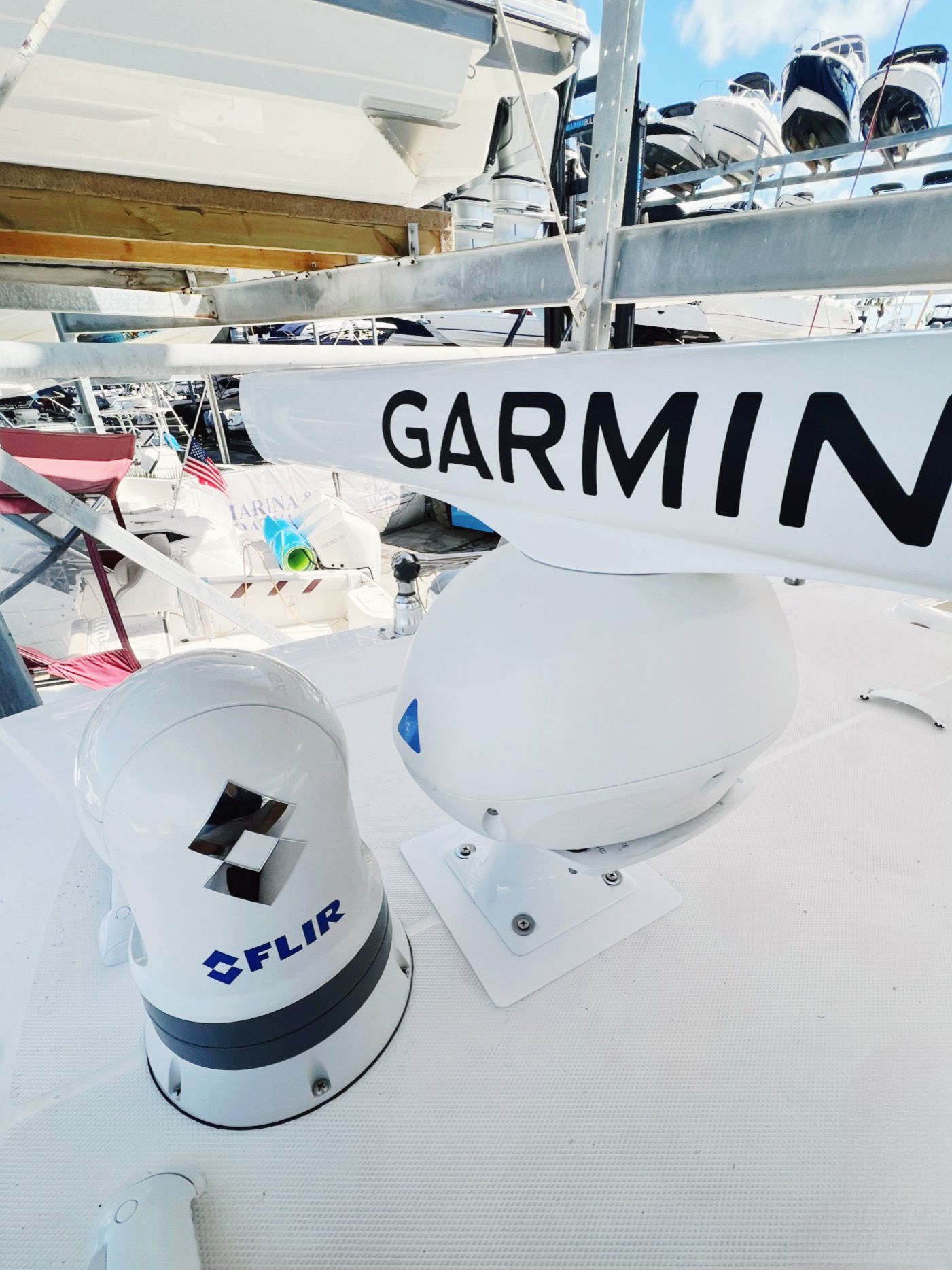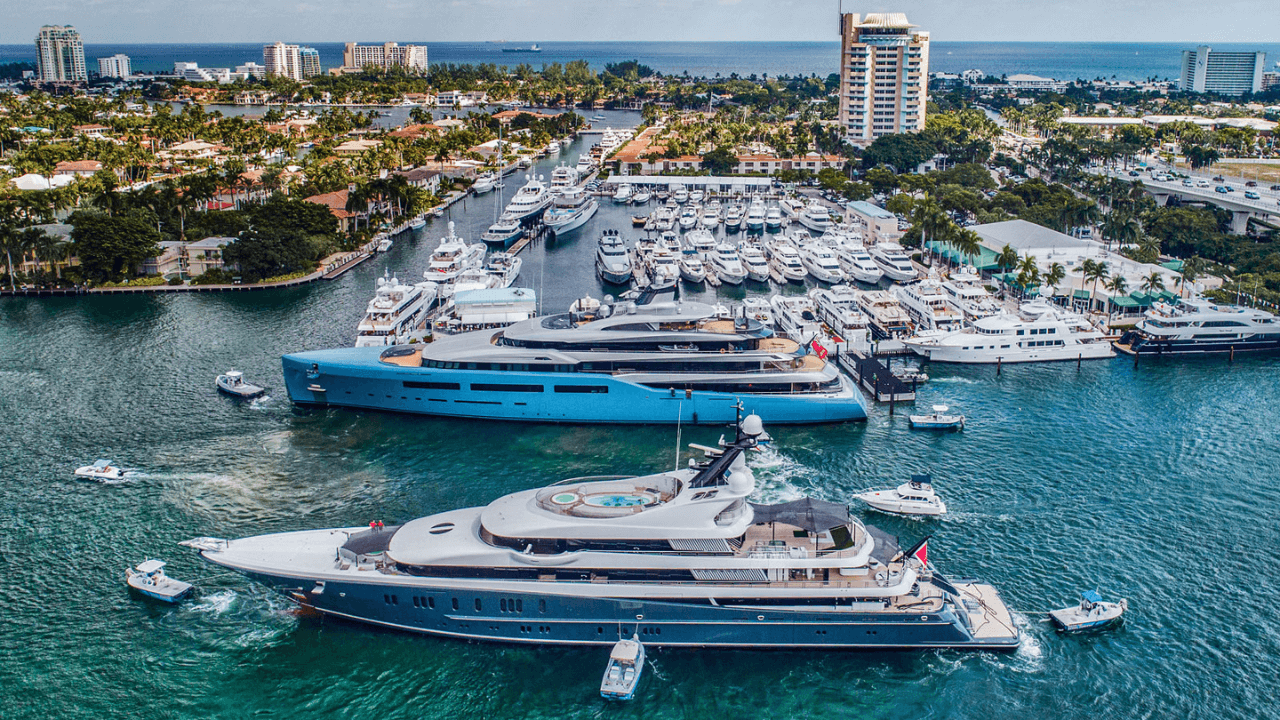7 Latest Marine Sonar Technology Applications (2023)
Recently, advancements in sonar technology have been shaping the marine industry in significant ways.
These innovative technologies are enhancing underwater exploration, navigation, and communication.
They are becoming indispensable tools not only for naval operations, but for scientific research and commercial applications as well.
This includes activities such as ocean floor mapping, fisheries management, oil and gas exploration, and more.
As our understanding of the ocean deepens, so too does the complexity and capability of sonar systems.
In the following sections, we will dissect the astonishing impact these developments have had on various facets of the marine sphere.
Latest Marine Sonar Technology Applications
1. Mapping and Imaging Ocean Floor
The exploration and mapping of the deep ocean, which makes up over 70% of our planet’s surface, presents a significant challenge to scientists and mariners alike. With the help of the latest marine sonar technology , enormous progress has been made in this field.
Our understanding of the ocean floor, its terrain, and the myriad of life forms it hosts has exponentially increased over the recent years. Much of this advancement can be attributed to the developments in sonar technology .
The primary method used to map the ocean floor is through the use of sonar, which stands for Sound Navigation and Ranging .
Sonar systems function by emitting a sound wave underwater, which then travels until it hits an object or the sea floor. The device then measures the time it takes for the sound wave to bounce back, providing an estimation of the distance and shape of the object or the intricacies of the underwater terrain.
The information obtained through sonar can be combined to produce amazingly detailed images and maps, which can be crucial for numerous applications.
Technological advancements in sonar allow us to map the ocean floor with incredible detail, giving us unprecedented access to understanding the mysteries that the deep ocean holds.
This not only provides important insights for scientific research but could also uncover potential resources as well as help detect and understand underwater hazards. It aids in the safe navigation of ships and submarines, by helping them avoid getting too close to the sea floor or hitting underwater mountains and structures.
Modern multibeam sonar systems can map large areas very quickly, compared to their older counterparts. They also provide highly accurate data , making them preferred for detailed seafloor studies.
The use of autonomous underwater vehicles (AUVs) equipped with improved sonar systems offers another promising avenue. These robots can cover large areas and work for extended periods, providing detailed images and maps of the ocean floor .
Moreover, seafloor mapping sonar systems are increasingly being used in tandem with satellite technology, leading to enhanced detail and coverage in mapping and imaging projects.
Watching this video provides an insight into the impressive work currently being done in mapping the world’s oceans, as well as some of the challenges faced. It offers a glimpse into the potential of the maritime industry in harnessing sonar technology for ocean floor mapping and shows what the future of this essential field of research might look like.
Overall, sonar technology has revolutionized our ability to explore and understand our planet’s oceans, proving indispensable for mapping and imaging the ocean floor. Looking forward, it continues to open up new possibilities for scientific research, resource discovery, and environmental monitoring.
2. Detecting Underwater Hazards and Objects
With the advancements of marine sonar technology , detecting underwater hazards and objects has become more efficient and precise.
Using sound waves, sonar systems scan the ocean floor and provide visuals on the presence of any potentially dangerous objects and obstacles .
Just like a torchlight in the dark, marine sonar systems illuminate the murky underwater world, revealing both man-made and natural hazards lurking beneath .
Sonar systems not only detect but also measure the distance to these objects, contributing to safer and effectively planned underwater operations.
Supporting the above point, the precise estimation offered by sonar technology aids in mapping detailed recovery plans ensuring minimum risk and maximum efficiency during these operations.
Furthermore, advancements in sonar technology have even made it possible to identify the materials objects are made of by analysing the reflection and refraction patterns of sound waves.
Such technology is now being utilized in military applications for detecting underwater mines and other potential threats for the purpose of national security .
It also aids in the industry of salvaging by helping in the discovery of sunken ships or downed aircraft– potentially holding valuable cargo that can be retrieved and repurposed .
Environmental implications of using sonar technology in this sector, such as underwater habitat disruption , are under ongoing studies.
Yet, the use of low-intensity sound waves and considerate timing of these scanning operations can help in mitigating any potential harm it can cause to marine life.
Moreover, the information derived from sonar technology can also assist in research and academic studies .
Data on underwater geomorphological features, or data about historical shipwrecks are of immense value to geologists and historians alike.
Lastly, modern sonar systems are configured to operate in a variety of modes and frequencies to adapt to diverse marine environments and specific tasks.
Given this, today’s sonar technology has proven itself extremely adaptable, and well-equipped to handle a wide range of underwater detection applications .
Further work in this field continues to improve and refine the capabilities of sonar technology, catering to ever-evolving challenges of underwater exploration and navigation .
3. Navigating and Communication in Submarines
The use of sonar technology in oceanic navigation, specifically for submarines, is invaluable in the modern marine environment.
As a crucial piece of technology , sonar facilitates safe navigation for submarines, allowing them to chart tricky undersea terrains and stay out of danger.
When it comes to submarine communication , sonar stands out as an essential tool.
Submarines can use sonic waves to communicate with other vessels, and with base stations, via undersea.
Communication undersea can be particularly challenging due to the density and physical properties of water.
However, sonar technology can overcome such challenges and ensure reliable communication channels even in the deep sea.
Marine sonar, with its capacity to send and receive low-frequency sound waves, proves to be a critical component in under-sea navigation and communication for submarines.
This application of sonar is vital as it allows submarines to cover great distances while maintaining constant and consistent communication.
A critical advantage offered by sonar is its resistance to interference by common atmospheric disturbances that could otherwise hamper communication.
Also, as the sound travels in an omnidirectional pattern under water, it also allows for 360-degree coverage , making sonar perfect for submarines’ navigation and communication.
You can get a practical example of how submarines use sonar technology for navigation and target finding by watching the video above.
Not only will it offer real-life examples of sonar technology in action, but it will also showcase how essential this technology is for submarines.
Furthermore, it goes without saying that sonar technology has greatly advanced over the years.
The technology now utilizes complex algorithms and computing power to analyze the data collected from the sound waves to form an accurate representation of the environment.
This helps submarines operate safely and efficiently, navigate through the world’s oceans with precision, and vastly improve their communication capabilities, thanks to the incredible abilities of modern marine sonar technology.
4. Underwater Archaeology and Treasure Hunting
One of the most captivating applications of marine sonar technology is its use in underwater archaeology and treasure hunting.
Through the use of advanced sonar systems, archaeologists and treasure hunters can now investigate deep under the sea at locations that were previously impossible to reach.
These sonar technologies have profoundly altered the field of marine archaeology, enabling professionals to discover shipwrecks and submerged structures with unprecedented accuracy.
The beauty of marine sonar in this field is its ability to provide detailed images of underwater artifacts, sites, and ships while doing minimal harm to these often fragile resources.
This trait is essential, as traditional excavation methods can be damaging to historical sites and artifacts.
Instead, the non-invasive characteristics of sonar technology allow for the meticulous exploration of the ocean floor without disturbing its contents.
Sonar technology provides a three-dimensional map of the seafloor and the objects resting there which is an incredible boon to undersea explorers.
For example, the mapping abilities of sonar can identify the outlines of a shipwreck, providing archaeologists with a valuable impression of the vessel’s structure before they begin excavations.
As for treasure hunters, marine sonar technology has significantly increased their successes .
Many famous shipwrecks carrying invaluable treasures were found with the aid of sonar, including the RMS Titanic and the sunken Spanish galleon, San José, carrying billions of dollars worth of gold and jewels.
Despite these advancements, however, the use of sonar in underwater archaeology and treasure hunting is still relatively recent , and there is still much to be explored about its full potential.
Advancements are being made in terms of increasing the resolution and depth capabilities of these sonar systems which will make delving deeper into the oceans more feasible.
The continuous advancements in the technology hold the promise of uncovering more hidden treasures and secrets of our oceanic past that lay waiting to be discovered beneath the sea.
Several projects and expeditions are currently underway, utilizing marine sonar technology to explore previously inaccessible areas of the deep sea and to hunt for lost artifacts and treasures.
As these explorations continue, we can expect more amazing discoveries in the field of underwater archaeology and treasure hunting courtesy of marine sonar technology.
5. Fishing Industry for Locating Fish
Marine sonar systems are an integral part of modern commercial fishing operations and have significantly contributed to the efficiency of fish locating.
Sonar systems operate by sending out sound waves and then analyzing the reflected sound or ‘echo’ to gain information about underwater objects and terrains.
This allows operators to accurately and quickly locate schools of fish, maximizing catch while minimizing time and fuel costs .
By watching, readers may acquire a deeper understanding of how sonar facilitates locating fish beneath the water’s surface.
The second thing they will learn is the application and benefits associated with the working principles of marine sonar in the fishing industry.
Sonar technology is not only beneficial for massive commercial fishing operations, but also recreational anglers seeking to improve their catch.
In the realm of sport fishing, portable sonar devices like ‘fish finders’ have become increasingly popular and accessible.
The emergence of such devices has virtually revolutionized sport fishing, equipping anglers with the same advanced technology used in commercial fishing boats.
Furthermore, these systems can also relay additional information, such as water temperatures, to aid anglers in understanding the environmental conditions affecting fish behavior.
Advancements in sonar technology have also enabled the mapping of underwater topographic features, which can further aid in pinpointing the locations of fish.
This ability to view the underwater landscape gives fishermen an edge, as they can directly target areas where fish are more likely to reside.
Today’s marine sonar systems can differentiate between species of fish, allowing fishermen to target specific types, thereby reducing unnecessary bycatch.
Sonar devices also assist in promoting sustainable fishing practices by identifying areas populated by juvenile fish or endangered species, thereby guiding fishermen to steer clear.
The innovation and advancement in the marine sonar technology have the potential to massively contribute to the productivity, efficiency, and sustainability of the fishing industry.
6. Oil and Gas Exploration Under-Sea
Using latest marine sonar technology , the oil and gas industry has made significant advancements in under-sea exploration.
This technology has drastically improved the industry’s ability to map out underwater geological formations , where oil and gas reserves could potentially be located.
Multibeam sonar is widely used in oil and gas exploration for finding the optimal drilling locations underwater.
Marine sonar technology has improved the oil and gas industry’s operational efficiency by reducing the risks associated with under-sea drilling.
In support of the above statement, sonar technology reduces the drilling risks by providing detailed and accurate underwater geological images, enabling drillers to avoid potential hazards.
It plays a crucial role in collecting data on the layer of sediment , contributing to informed and strategic decision-making in the drilling process.
Apart from detecting potential drilling spots, the sonar technology also assists in monitoring the drilling process and pipeline installations in real-time .
With sonar technology, the inspection of existing underwater oil and gas infrastructures has become easier and more efficient.
The oil and gas industry uses the sonar imaging to maintain and inspect the integrity of these infrastructures.
Another application of sonar technology in this industry is during oil spill incidents .
During such incidents, sonar technology assists in identifying, monitoring, and managing underwater oil plumes .
This technology is vital for the recovery plans for underwater oil spills, where early detection can significantly reduce the impact on the marine environment.
Moreover, marine sonar technology allows companies to study underwater current patterns which can influence the spread of oil during a spill.
With sonar technology, the under-sea oil and gas exploration process has become safer, more efficient, and environmentally friendly .
Its contributions to the advancement of this industry are invaluable and cannot be understated.
7. Monitoring Marine Life and Ecosystems
Among the many fascinating applications of modern marine sonar technology, one of the most crucial is the monitoring of marine life and ecosystems.
Through using high-frequency sound waves, sonar allows for the real-time detection and mapping of biological activity beneath the surface of the world’s oceans.
This forward-looking approach represents a critical tool in the ongoing efforts to understand and protect the delicate balances which characterize marine ecosystems.
Before the advent of sonar, documenting marine life necessitated intrusive methods that often disturbed the creatures and ecosystems under examination; but sonar eliminates this issue by allowing for remote, non-intrusive monitoring.
With advancements in sonar technology, conservationists and marine biologists are equipped with tools that can non-intrusively monitor submarine life, making detailed observations without the need for manually capturing or disturbing these organisms.
This shift is not only kinder to the organisms being observed; it also helps to maintain integrity and accuracy in the data researchers collect.
Specific data like water temperature, salinity level, and pressure can also be monitored using sonar technology .
This abundance of data significantly enhances the understanding of how different variables affect marine life and the health of various ecosystems.
Given the alarming rate of change in many marine ecosystems due to climate change and human activity, such understanding forms a critical part of global conservation efforts.
One particular area where sonar has really made a difference is in real-time tracking and monitoring of whale populations .
Sonar provides a level of accuracy in population studies which was previously unattainable, enabling researchers to observe trends, migration habits, and even interact with these majestic creatures in a completely unobtrusive manner.
This video demonstrates a practical example of how marine sonar technology informs research about underwater environments and helps shape conservation policies.
The benefits of this substantial leap in technology are manifold and will continue to accrue as sonar tech evolves and our understanding of marine ecosystems deepens.
Monitoring marine life and ecosystem is an important responsibility that has been greatly facilitated by sonar technology and its various applications in this field.
In essence, sonar provides our eyes and ears beneath the surface of the world’s oceans, making a vital contribution towards understanding and safeguarding our marine ecosystems .
The Bottom Line
Ultimately, sonar technology represents a compelling tool with a wide range of applications, enhancing understanding and ensuring safety in multiple maritime domains.
From mapping and imaging the ocean floor to detecting underwater hazards, it has made navigating our vast oceans more informed and less perilous.
It has been instrumental in uncovering hidden archaeological relics and lost treasures and transforming industries such as fishing and oil and gas exploration.
Today, with a deepening awareness of environmental conservation, monitoring marine life and ecosystems is more crucial than ever before.
Hence, it is evident that the role and impact of sonar technology in oceanography is immense, and its potential for future expansion is equally significant.
Contact Us
Contact Us
Recent Posts
CONTACT US
Looking to upgrade your marine electronics?
With more than 25 years of experience, we can help you get started today!




